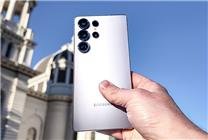Breakthrough in Perovskite LED Technology: Achieving Over 45% Quantum Efficiency
- Record-Setting Achievement: Researchers at Nanjing University of Technology have developed a perovskite LED device with an external quantum efficiency exceeding 45%, a significant milestone in the field.
- Interlayer Photon Recycling: The innovative approach utilizes interlayer photon circulation to enhance light extraction efficiency, overcoming traditional limitations.
- Commercial Implications: This breakthrough paves the way for high-performance, cost-effective, and flexible LED technologies, addressing the growing demand for advanced lighting and display solutions.
On November 13, 2023, a remarkable advancement in LED technology was reported by the research team led by Academician Huang Wei and Professors Wang Jianpu and Wang Nana from Nanjing University of Technology. The team successfully developed an all-perovskite stacked LED device that has set a new world record in this technology with an external quantum efficiency surpassing 45%. This groundbreaking research was published in the esteemed journal "Nature," under the title "High Performance Tandem Perovskite LEDs through Interlayer Photon Recycling."
Advancements in LED Technology
Light-emitting diode (LED) technology has rapidly progressed in recent years due to its ability to efficiently convert electrical energy into light. This technology has found extensive applications in various sectors, including residential lighting and high-definition displays. As demand for brighter, cost-effective, and flexible lighting solutions escalates, there is a pressing need for advanced LED technologies.
A focal point in this research landscape is perovskite LEDs, which have attracted considerable attention for their advantages in solution-processing, high color fidelity, and low production costs. While the performance of these LEDs has become increasingly competitive with commercial organic LEDs, current commercial organic LED display screens typically utilize a stacked device structure. This approach allows for the series connection of multiple light-emitting units to achieve brightness enhancement while maintaining current density.
Challenges in Quantum Efficiency
Despite the benefits of stacked perovskite LEDs, their external quantum efficiency remains below 10%, significantly lagging behind that of single-junction devices. This limitation has been a major hurdle in their pathway to commercialization. To address this issue, the research team implemented innovative strategies to enhance charge injection and balance within stacked devices by refining the connection layer structure.
Innovative Solutions
A significant breakthrough from this research effort was the introduction of a strategy to leverage interlayer photon circulation within the stacked devices. By manipulating the micro-nano structures of the perovskite luminescent layers, the team enabled photons generated by one emitting unit to be reabsorbed by another layer, allowing for re-emission. This newly proposed methodology effectively breaks the traditional efficiency barriers seen in LED technology and achieves a synergistic effect often described as "1+1 > 2."
As a result of these efforts, the researchers increased the external quantum efficiency of the perovskite LED device to an impressive 45.5%. Furthermore, the device maintained a high efficiency of 34.5% even at a current density of 100 mA cm^-2, further solidifying its status as a pioneering advancement in LED luminous efficiency.
Future Directions
The implications of this research are profound, offering promising prospects for the future of LED technology. The combination of enhanced light extraction efficiency with cost-effective production processes paints a hopeful picture for industries reliant on advanced lighting and display technologies. As companies and consumers increasingly demand high-quality, energy-efficient solutions, the development of these advanced perovskite LEDs could revolutionize the market landscape.
Conclusion
The world of LED technology is on the cusp of a transformational shift, and the recent developments from Nanjing University of Technology signify a critical step forward. By overcoming existing limitations and setting new benchmarks in efficiency, researchers are not only advancing scientific knowledge but also paving the way for practical applications that could redefine lighting and display technologies. The pursuit of high-performance perovskite LEDs continues to be a vibrant area of research, promising an exciting future for this field.
In conclusion, the successful achievement of a 45% quantum efficiency in perovskite LEDs marks a significant milestone that may lead to innovative and commercial advancements poised to meet the rising demands of modern technology. As these developments unfold, the potential for widespread adoption of perovskite LEDs remains immense, highlighting the critical importance of ongoing research in this area.









